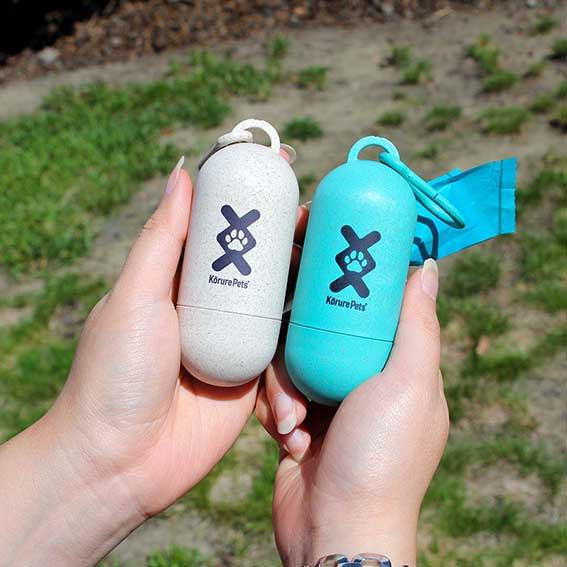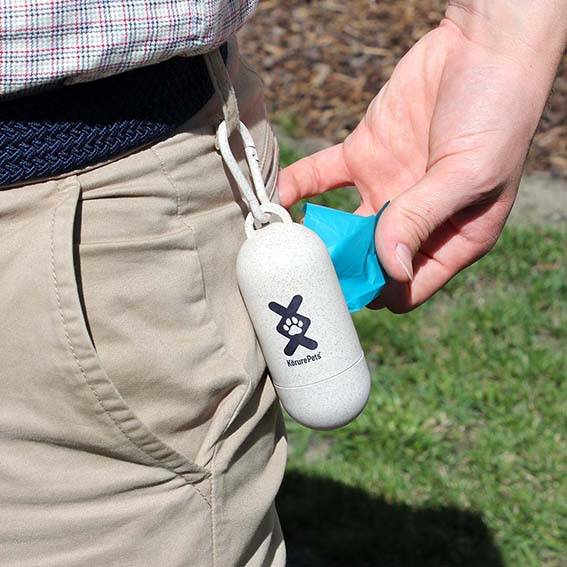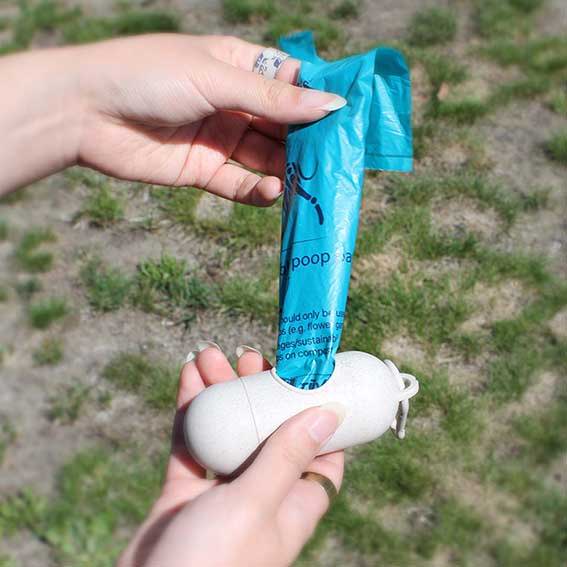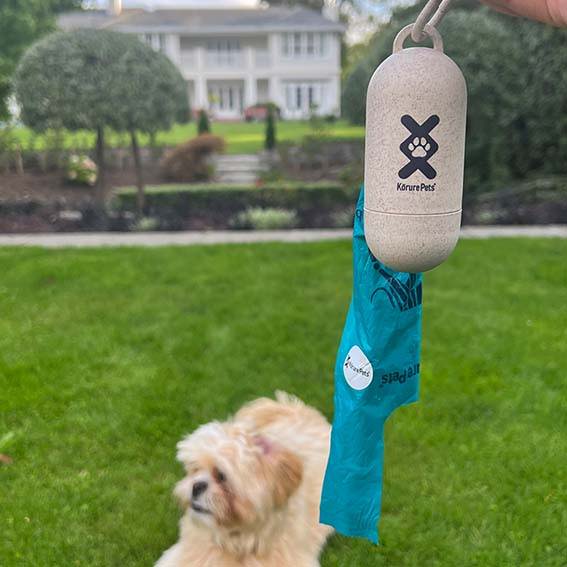Featured BY
Our Hero Ingredient - Wheat Straw
The wheat straw comes from the stalks of wheat plants.
It is biodegradable and compostable in 3 to 6 months depending on the conditions.
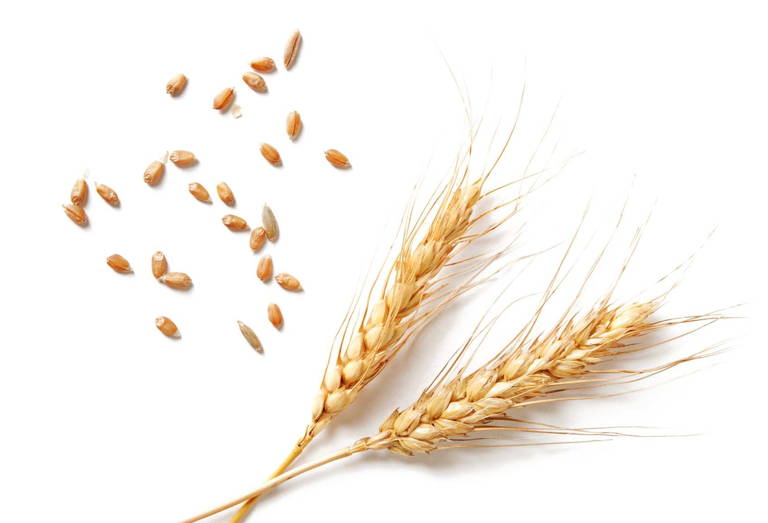
Natural
100% BPA Free
Sustainable
Free from heavy metals and any other metals found in other plastics.
Safe and Harmless
No chemicals and nasties.
Compostable
3 to 6 months depending on the conditions.
Make your walks sustainable!
Sustainable choice for long walks with your four pawed friend.
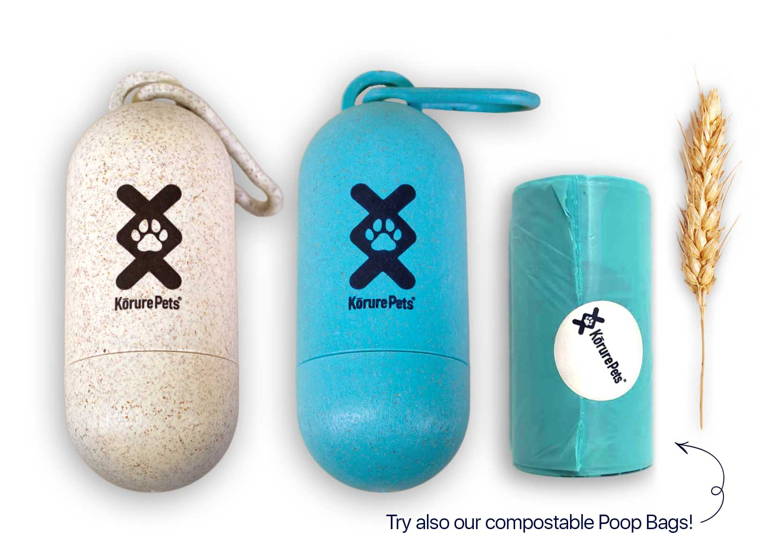
Poop bag holder
100% natural wheat straw plastic
Contains NO chemicals and nasties.
Related Products
Reviews
Our customers love us for what we stand for and more importantly how we changed their dog's life for the better.
FAQ
Feel free to give us a call or message us directly on the messenger below.
Here are some frequently asked questions...
What are biodegradable plastics?
Degradable plastics are designed to breakdownover specific time frames either biologically ormechanically. The defining characteristic is the time[minutes, months, years] it takes to degrade andthis determines composting ability as well as reuseand recovery. The length of time depends on thetype of degradable material, the end environment,and the conditions it is exposed to including light,heat, microorganisms and water.
Are all biodegradable plastics compostable?
No. All compostable plastics are biodegradable[biologically degradable], however, not allbiodegradable plastics are compostable within thetimeframes or conditions stipulated in the relevantinternational standards for compostability.
Will compostable plastics decompose in myhome compost bin?
Only if it meets the home composting standard e.g.EN13432 (home OK compost). Home compostingconditions are different (lower temperature) tocommercial composting conditions. There areseparate testing procedures, certification andlabelling systems for each.
What are the end products of biodegradation and dothey have any harmful effects on the environment?
The end products of biodegradation carried out in thepresence of air (oxygen) are carbon dioxide, water, mineralsalts, and biomass. In the absence of air (oxygen) theseproducts are methane, carbon dioxide, biomass, andmineral salts.
That is one of the reasons for having standards as theydetermine if biodegraded products qualify for use as compost.These standards look for any side effects from the residualmaterial such as soil fertility and the ability of worms to survive.
What are oxodegradable plastics? Are these different?
Oxodegradable plastics are one of a number of materials thatfall into the second category of degradable plastics. Theyare conventional commercial plastics manufactured frompetrochemicals (such as polyethylene) with metal and/or otheradditives (prodegradant) which is designed to acceleratedegradation under defined conditions of time, temperature,heat and oxygen (air) and ultra-violet light. Attack by oxygenresults in the plastic degrading to a size that can eventuallybe attacked and digested by microorganisms under certainconditions. In the case of current oxodegradable plastics, thistwo step process does not meet current commercial or homecomposting standards (time, heat, air, and water).
Is it true that the use of oxodegradable plastics leave residual plastic particles in the soil?
Yes as it does not meet the composting standards asdescribed in EN13432.
There is ongoing research into this area and this document willbe updated accordingly.
Is it better to buy products in “biodegradable” plasticpackaging?
Unless the packaging has to be biodegradable to do its job,it’s unlikely that biodegradability would impart an advantage.The indiscriminate promotion of the biodegradabilityof packaging could result in increased littering. There’swidespread misconception in the market that if it’sbiodegradable, then it must be better for the environment thanif it’s not biodegradable. That’s generally misleading. Somepeople think that if something is biodegradable, it’s thereforemore sustainable. Not necessarily. Not all biodegradable/compostable plastics are made from renewable resources.
If Plant based packaging ends up as litter in a natural waterway, how quickly will it biodegrade?
PLA (polylactide) is a member of the polyester plastic family,but based on a renewable resource. For a PLA bottle to breakdown quickly, you need moisture and elevated temperature. Ina natural water way, you’ll only have one out of two. Generally,the average temperature day and night will be at a level whichwould mean biodegradation would take between 2 and 4years, maybe longer.
This is still much shorter than normal plastic which takes hundreds of years to degrade.
Can bioplastic packaging be recycled in New Zealand?
In New Zealand bioplastic packaging is currently not acceptedin recycling and commercial composting systems. Forthis situation to change it will require a sufficient volumeof bioplastic in the marketplace to ensure the recoveryinfrastructure can collect it. As with other plastics theimplementation and observance of appropriate labellingand collection-sorting facilities can help prevent crosscontamination of plastics recycling streams. Contact thesignatories to this guide, Managing the Transition: DegradablePlastics in New Zealand – A Guide and Industry Commitment,for further information
What is a realistic time frame for all plastic productsto be made from clean, fully sustainable materials otherthan oil?
This is not likely to occur in the foreseeable future. The currentproduction of bioplastics is less than 1% of global plastics andis expected to possibly increase to between 2-5% by 2012.This is small in comparison to conventional polyethylene,which is the plastic most commonly used to make commodityproducts such as shopping bags. It will take some time beforepolyethylene is replaced by an alternative plastic based on asustainable feedstock from a renewable resource. Major plasticmanufacturers throughout the world continue to researchalternatives and new plastics regularly enter the market.
What is the difference between ‘renewability’ and‘sustainability’?
Sources from which plastics can be produced are ‘renewable’if they can be replaced by natural processes e.g. new plantgrowth. If these sources are under competitive pressure foruse as food or other uses they may not be ‘sustainable’.
This is why we use Wheat Straw to make our cases. As wheat straw is a by-product and normally gets thrown out and rendered useless.
Will degradable plastics change the amount of litteror people’s littering behaviour?
- Littering is a complex problem created by consumerbehaviour, the type of product and packaging andunsuitable infrastructure including bin type, type ofcontainer, location and recovery services.
- It is unclear that introducing degradable plastics willchange consumer behaviour, and consequently, theamount of litter in the environment.
- There are some concerns that people who are currentlylikely to litter, would still litter, or may litter more, if theybelieve that the product will degrade.
- Overall, addressing litter and littering is best managedthrough a combination of education, infrastructure andenforcement of suitable regulations.

